Browning Auto-5: The First Successful Semi-Auto Shotgun
John Moses Browning is perhaps the most prolific and best-known gun designer who ever lived. The true measure of Browning’s genius is that he not only created firearm designs that are still being produced today in forms virtually unchanged from the original, but that the design principles he engineered are found in almost every successful semi-automatic firearm to this day.
Beginning in early 1897, John Moses Browning devoted two years of his life to missionary work for the Mormon Church. Upon his return to Ogden, Utah, he began work on an invention that would eventually become known as the Auto-5 shotgun. It is easy to imagine the idea for the Auto-5 taking hold in Browning’s fertile mind while he was engaged in his missionary work. It is much harder to imagine Browning not thinking of an invention for two years. His first patent for a “Recoil Operated Firearm” was filed May 6, 1899.
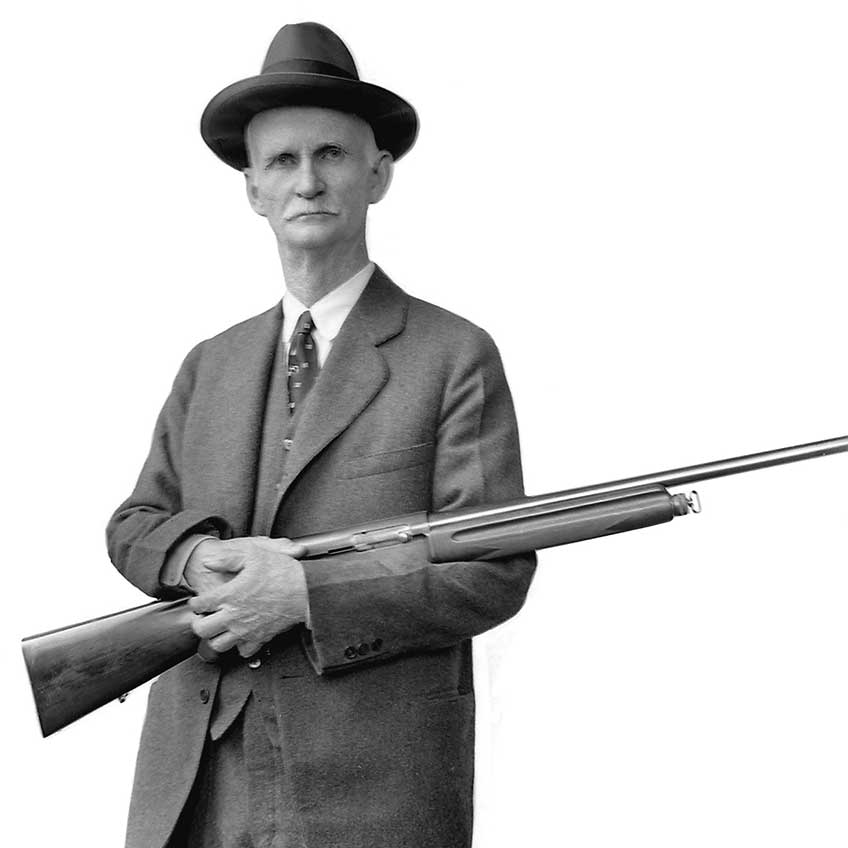
- Activate Your Own Stem Cells & Reverse The Aging Process - Choose "Select & Save" OR Join, Brand Partner & Select Silver To Get Wholesale Prices
- Get your Vitamin B17 & Get 10% Off With Promo Code TIM
- How To Protect Yourself From 5G, EMF & RF Radiation
- Protect Your Income & Retirement Assets With Gold & Silver
- Grab This Bucket Of Heirloom Seeds & Get Free Shipping With Promo Code TIM
- Here’s A Way You Can Stockpile Food For The Future
- Stockpile Your Ammo & Save $15 On Your First Order
- Preparing Also Means Detoxifying – Here’s One Simple Way To Detoxify
In 1899, Browning approached Winchester president T.G. Bennett with a revolutionary new design for the world’s first semi-automatic shotgun (between 1893 and 1902, Winchester purchased a total of 44 Browning patents). Unlike his prior arrangements with Winchester, Browning wanted to receive royalties for the design instead of selling the patent outright. Bennett initially balked at the idea, but negotiations continued for almost two years.
Frustrated with the delay, Browning took his new invention to Belgium to meet with a company already producing pistols of his design—Fabrique Nationale d’Armes de Guerre, or FN. Henry Frenay, FN’s general manager, was thrilled with the opportunity to produce the new gun, and a contract was executed March 24, 1902.
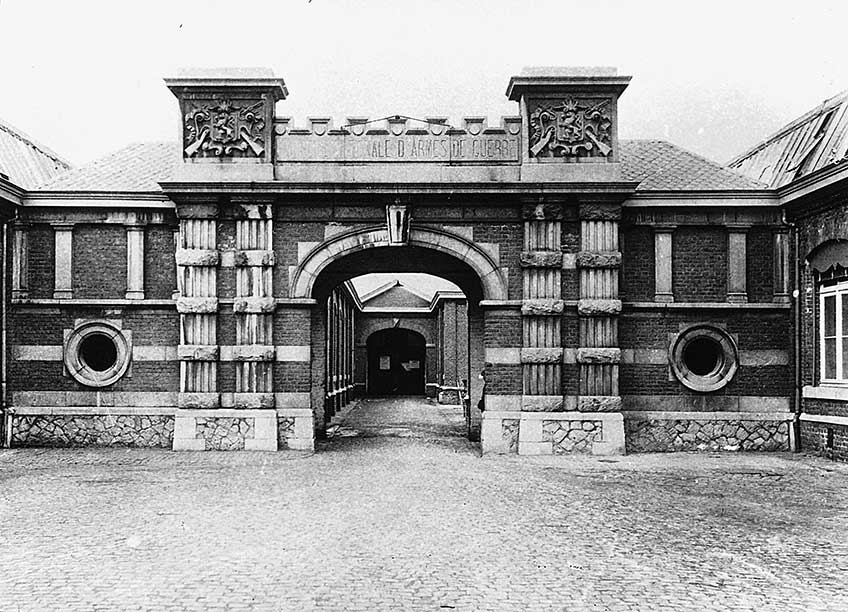
The first Auto-5 was shipped to Browning on September 17, 1903. It was a design that would eventually come to be known as the Auto-5, A-5, Browning Automatic, “Humpback,” “Wild Mule,” or “Aristocrat of Automatic.” As introduced, the Auto-5 was chambered for 12-ga. shells and in four models that could be upgraded by engraving, grade of wood and finish: The Regular Gun, Trap Gun, Messenger Gun and Two Shot Automatic. Typically these early Auto-5s are not engraved; however, FN contracted with local engravers to perform embellishments on them on a per-order basis.
In 1903, a new agreement released Browning from his obligation to purchase Belgian-made Auto-5s but permitted FN to continue to sell them in all countries except the United States. Browning negotiated a contract with Remington to produce the gun for the American market. The Remington version of the Auto-5 was introduced in 1905 as the “Remington Autoloading Shotgun” and later became known as the Remington Model 11. They are not considered Auto-5s, although they are made on the Auto-5 patents.
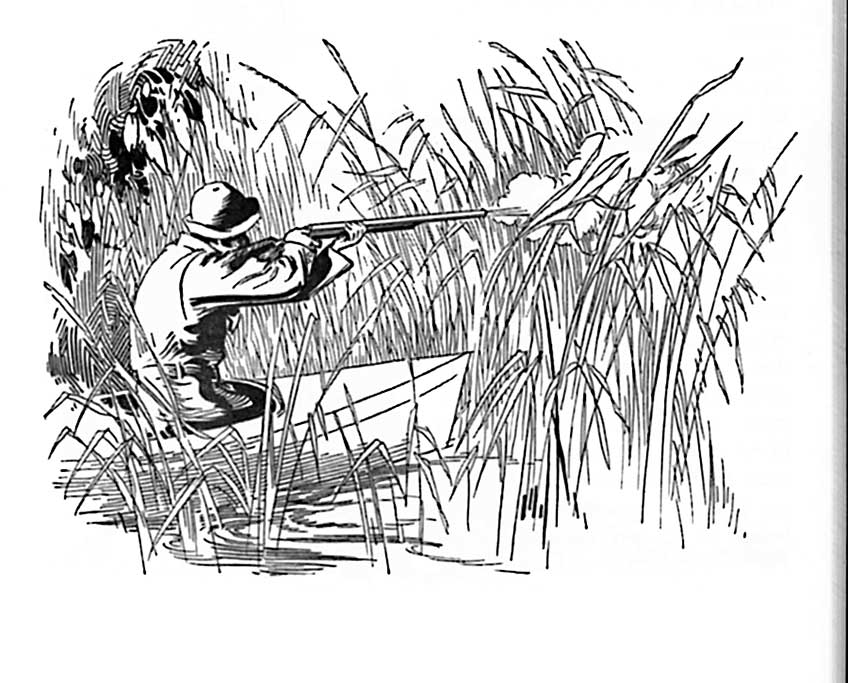
FN standardized engraving options by 1909 and offered six grades, or Types, of Auto-5s with each having a different engraving pattern. The 16 gauge was also introduced in 1909, and both the 12 gauge and 16 gauge were available with the same options. In 1923, Browning’s contract with Remington expired and, once again, FN exported Auto-5s to Browning. Between 1903 and 1923, FN sold more than 87,000 Auto-5s but Remington sold almost 270,000 Autoloading Shotguns.
Browning offered four grades of Auto-5s when imports from FN resumed. Buyers had standardized options for engraving, grade of wood and finish. Grade 1s had plain receivers without engraving. Grade 2s had a scroll and leaf design. Grade 3s were engraved with a dog and bird scene, and the Grade 4s were engraved and inlaid with ornate green and yellow gold inlay.

FN Types I, II, and III were variations of the foliage and scroll design. The Types IV and V had engraved animal scenes, and the Type VI was the same design as the Browning Grade 4 with two colors of gold inlay. An increased demand for engraved guns resulted in FN hiring master engraver Felix Funken on June 1, 1926, to establish its engraving shop. Funken engraved guns, hired the engravers, created and oversaw the FN engraving school, and managed the staff of engravers.
In 1932, Browning introduced the 3-Shot Automatic in response to increasing legislative pressure to limit shot capacity for migratory birds. The 3-Shot Auto-5 is identical to the five-shot except for a shorter, two-shell magazine tube and a shorter fore-end. It was popular until a 1935 regulation allowed a wooden magazine plug to limit shot capacity. The 3-Shot Auto-5 was discontinued in 1946.
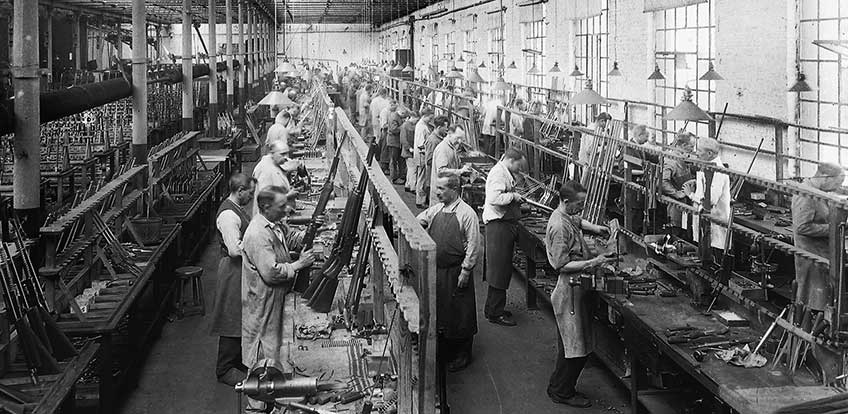
The first Browning Skeet Model Auto-5 was introduced in 1935 in both 12 gauge and 16 gauge. Browning added the Sweet Sixteen to its line in 1937 to provide a lightweight model of the 16-ga. shotgun. The “Sweet Sixteen” was an instant success as a skeet gun because of its light weight. The Trap Model Auto-5 was offered as early as 1903 in various configurations but was discontinued in 1970.
FN sales materials for 1931 mention a special 12-ga. model of the Auto-5 designed for pigeon shooting. The model is aptly named the “Auto-5 Special for Pigeons.” The barrels were specifically marked “Special pour tir aux Pigeons.” FN’s exports of the Auto-5 ceased in May 1940. Browning once again turned to Remington, and the Remington production for Browning, from 1940 thru 1947, is commonly known as the “American Browning.”
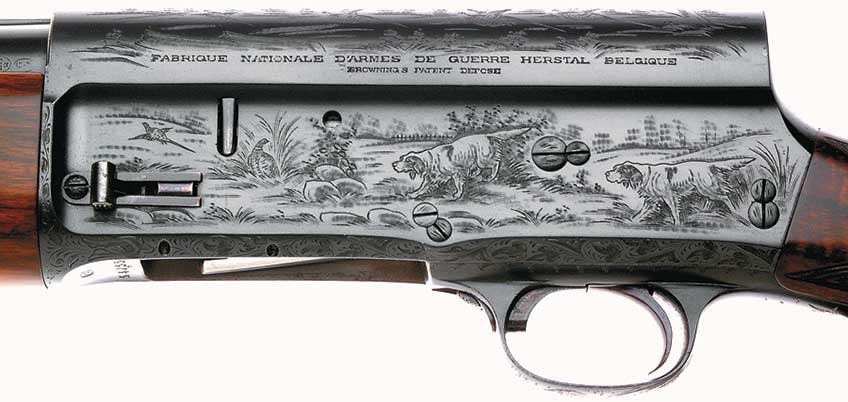
When Allied soldiers liberated Belgium in 1944, production at FN slowly resumed and, until 1946, almost all sales were to soldiers. Browning began receiving production from FN in September 1946. Gradually production increased and Browning ended its contract with Remington in 1947. Subsequent FN production of Auto-5s for Browning did not include the many options of grades available prior to World War II. There was one engraving pattern available, and it remained basically unchanged until production of the Auto-5 ended in 1999.
Browning added the Light Weight 12 gauge to the line in 1946. Like the Sweet Sixteen, the Light Weight 12 is simply a lighter version of the Standard weight gun. Basically, weight is removed from the barrel ring by drilling three holes in it; the rib on vent rib barrels is narrower; the receiver has additional milling; and the buttstock has more wood removed.
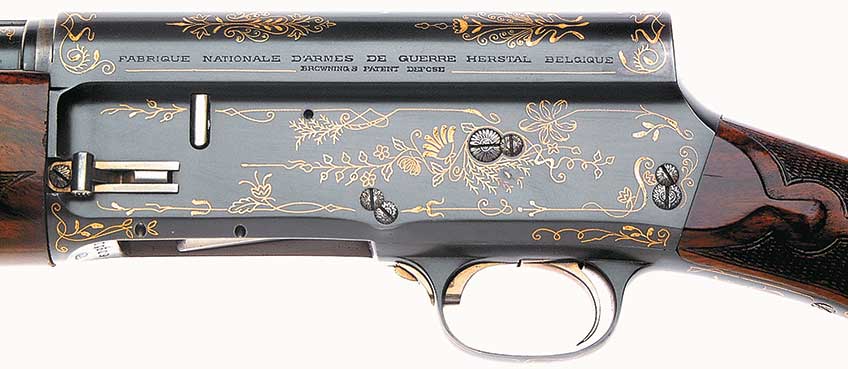
Early Light Weight 12s and Sweet Sixteens were finished with gold-plated triggers and safeties (until 1951), but there is no other visible feature that distinguishes them from their Standardweight cousins. Beginning in 1948-1949, the left sides of the receivers for the Light Weight models were engraved with the name “Sweet Sixteen” or “Light Twelve.”
Little changed for guns sold by FN or Browning during the following several years; however, the Light Weight 20 ga. and Magnum 12 ga. were added to Browning’s line in 1958. John Browning had considered producing a 20-ga. Auto-5 as early as the 1920s, but he did not believe it could be produced in a weight significantly lighter than the 16 gauge and abandoned the idea. It would be more than 30 years before the idea was revived and the
20-ga. gun added to Browning’s line.
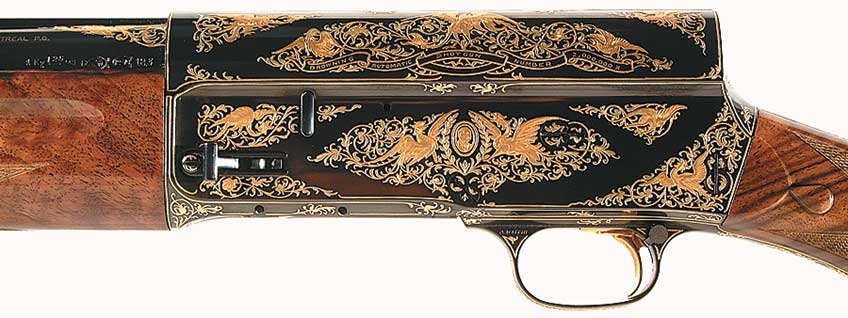
The Magnum 12 gauge was the first Auto-5 available with a 3” chamber, providing a desirable alternative for duck, goose and turkey hunting. Browning added the Magnum 20 gauge to its line in 1967. Only the Magnum 12 gauge was fitted with a recoil pad as standard equipment.
FN added the Super Lightweight to its line in 1958. Those guns were almost exclusively sold in markets other than the United States. The Super Lightweight had an aluminum alloy receiver and lighter weight wood. By way of comparison, the Light Weight 20 gauge with 26” vent rib barrel weighed approximately 6 lbs., 4 ozs., while the comparably equipped Super Lightweight weighed about 5 lbs., 8 ozs.
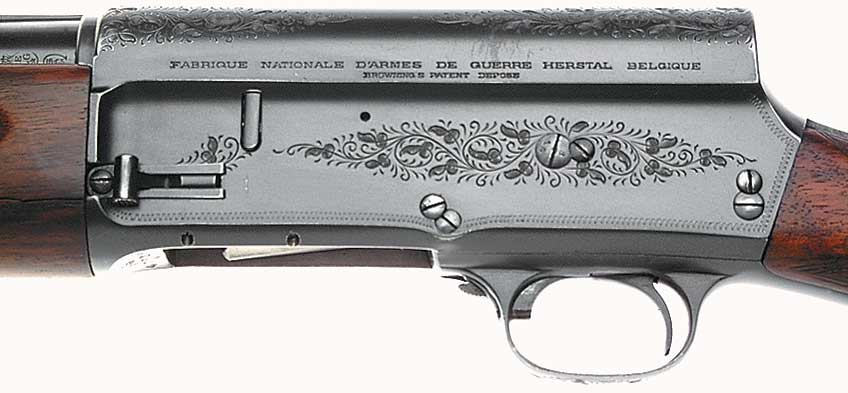
FN reached a milestone in 1970 having produced the 2 millionth Auto-5 since production resumed following World War II. To commemorate that occasion, two highly engraved Auto-5s were produced using a pattern created by Felix Funken in 1930. One is serial number 2,000,000 and the other 2,000,000-X. Browning also sold 2,500 Light Weight 12-ga. Auto-5s known as the Two Millionth Commemorative.
In 1976, Browning contracted to have Auto-5s produced by Miroku in Japan. FN continued to actively produce the Auto-5 into 1978 when basic production came to a halt. It did, however, produce special runs of Auto-5s from time to time, such as the Gold Classic in 1984 and the Centenary series in 1989. There are other exceptions where FN produced Auto-5s in field grade.
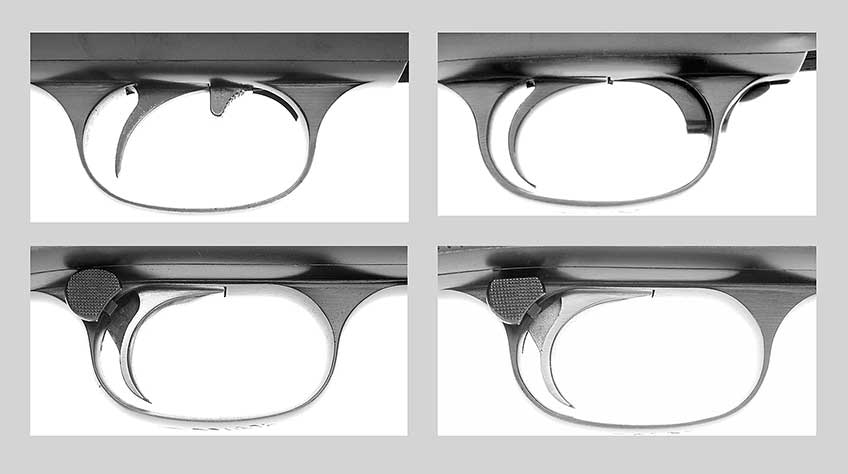
The venerable Auto-5 was discontinued in 1999 with a series known as the Auto-5 Final Tribute Limited Edition. There were 1,000 of these guns produced by Miroku—ending 96 years of production of one of the world’s most successful and beloved shotguns.
Article by ANTHONY VANDERLINDEN














